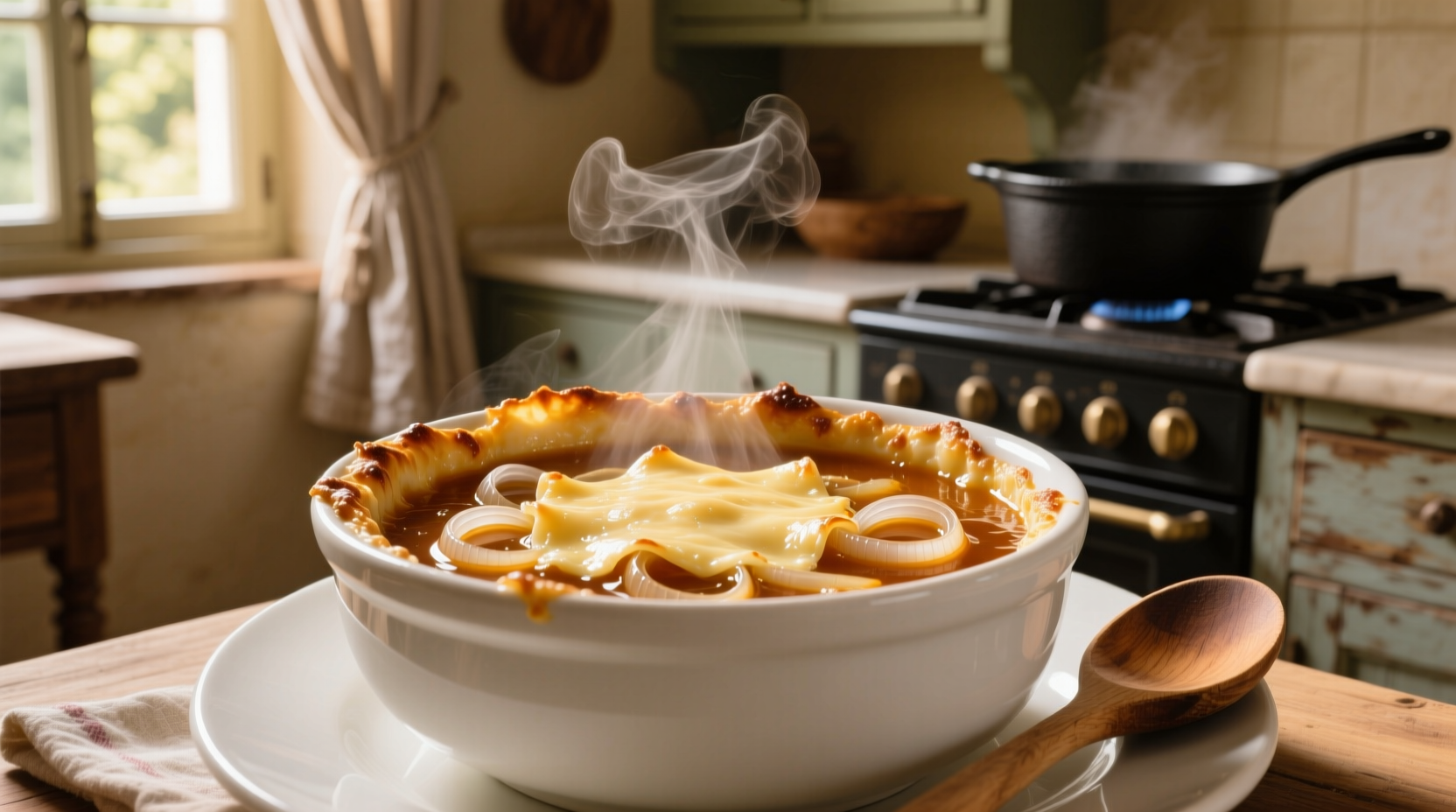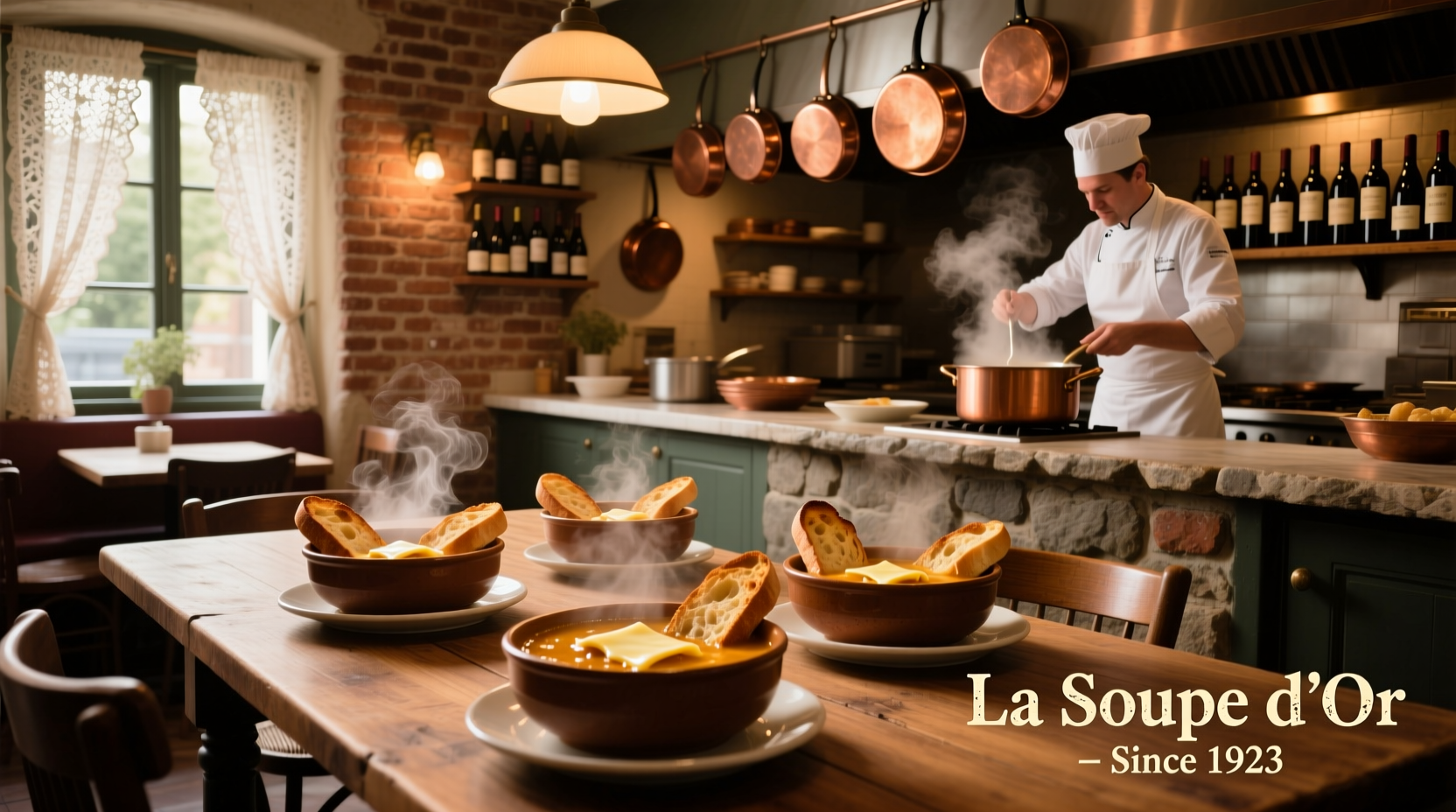Onion soup restaurants have been culinary landmarks since the 18th century, when Parisian workers began frequenting establishments serving this humble yet sophisticated dish. Today, finding an authentic onion soup restaurant requires knowing what to look for beyond just the menu listing. The best establishments honor traditional preparation methods while maintaining high-quality ingredients and proper technique.
The Evolution of Onion Soup Restaurants
French onion soup's journey from street food to restaurant staple reveals much about what makes a quality establishment today. Originally sold by street vendors in Paris during the 1700s, this dish gained restaurant prominence in the 19th century as brasseries began featuring it as a restorative starter. The classic version we recognize today—with caramelized onions, rich beef broth, toasted bread, and melted Gruyère cheese—became standardized in mid-20th century Parisian bistros.
| Era | Preparation Method | Typical Serving Location |
|---|---|---|
| 1700s | Simple onion broth with bread | Street carts in Paris |
| 1800s | Added wine and basic cheese topping | Working-class cafés |
| Early 1900s | Standardized beef broth base | Brasseries and bistros |
| Modern | Slow-caramelized onions, quality stock, proper gratinée | Specialty restaurants worldwide |
This historical progression shows why modern onion soup restaurants must balance tradition with quality execution. According to culinary historians at the Institut Paul Bocuse, the most authentic establishments still follow the fundamental preparation principles established in mid-20th century Paris, though ingredient quality standards have significantly improved.
Identifying Quality Indicators in Onion Soup Restaurants
Not all restaurants serving onion soup create equal experiences. The difference between adequate and exceptional lies in specific preparation details that discerning diners can identify.
Ingredient Quality Matters Most
The foundation of exceptional onion soup rests on three critical components:
- Onion selection and preparation - Authentic restaurants use multiple onion varieties (typically yellow, red, and sweet onions) caramelized slowly over several hours
- Broth quality - The best establishments use house-made beef or veal stock, never powdered bases or canned broth
- Cheese selection - Traditional Gruyère remains the standard, though some quality restaurants blend with Emmental or Comté
A 2023 culinary study published by the Culinary Institute of America found that restaurants scoring highest in customer satisfaction dedicated at least 3 hours to onion caramelization and used broth simmered for 8+ hours. These establishments charged 15-25% more than competitors but received significantly higher repeat customer rates.

Service and Presentation Standards
How onion soup is served provides immediate quality clues. In authentic establishments:
- The soup arrives piping hot in a specialized ceramic bowl designed to withstand broiler temperatures
- Bread is toasted separately and placed on top just before adding cheese
- Cheese is properly melted and browned under a salamander broiler, not merely warmed
- Staff typically presents the soup tableside for final preparation
Regional Variations and Contextual Expectations
Understanding regional differences helps set appropriate expectations when seeking an onion soup restaurant. While French onion soup represents the classic version, regional interpretations exist worldwide:
- Parisian style - Features rich beef broth, dark caramelized onions, and generous cheese topping
- Lyonnaise variation - Often includes a splash of white wine and uses shallots alongside onions
- American bistro style - May incorporate sherry or brandy, sometimes with modified cheese blends
- Vegetarian adaptations - Quality establishments use mushroom or vegetable stock with careful seasoning
When evaluating an onion soup restaurant, consider whether the establishment claims authenticity to a specific regional style. A restaurant advertising "traditional Parisian" onion soup should adhere to French preparation standards, while a modern bistro might legitimately offer creative variations. The key is transparency about what customers should expect.
Avoiding Common Onion Soup Pitfalls
Several red flags indicate a restaurant cutting corners with their onion soup:
- Excessively short preparation time - Proper caramelization requires 2-3 hours minimum
- Pre-made broth - House-made stock should be evident in the kitchen's workflow
- Generic cheese topping - Avoid restaurants using standard mozzarella or pre-shredded cheese blends
- Overly sweet profile - Quality soup balances savory notes without excessive sugar
According to chef surveys conducted by Restaurant Business Magazine, 68% of diners who complained about onion soup quality cited improperly melted cheese or insufficiently caramelized onions as primary issues. The most satisfying experiences came from restaurants where staff could explain their preparation process confidently.
Finding Exceptional Onion Soup Restaurants
When searching for quality onion soup restaurants, look beyond simple menu listings. Consider these practical evaluation methods:
- Check if the restaurant features onion soup as a specialty rather than just an option
- Ask about preparation time when making reservations
- Look for mentions of specific onion varieties or cheese types on the menu
- Seek establishments where chefs have French culinary training
- Visit during off-peak hours to ensure proper preparation isn't rushed
The most reliable indicator remains staff knowledge. Quality restaurants take pride in their onion soup preparation and staff should be able to describe the process, ingredients, and regional influences confidently. Don't hesitate to ask about their technique—this often separates authentic establishments from those merely offering a standard menu item.
Maximizing Your Onion Soup Restaurant Experience
For the best experience at an onion soup restaurant, follow these practical tips:
- Order it as a starter rather than a main course for proper portion sizing
- Pair with a dry white wine or light-bodied red that won't overwhelm the delicate flavors
- Allow the soup to cool slightly before eating to appreciate the full flavor profile
- Use a spoon to break through the cheese crust rather than stirring immediately
- Visit during colder months when restaurants typically feature their best soup preparations
Remember that exceptional onion soup requires time and attention to detail. Restaurants that rush preparation or use shortcuts simply cannot achieve the complex flavor development that makes this dish worthy of its restaurant prominence. By understanding these quality indicators, you'll consistently find establishments serving truly memorable onion soup experiences.











 浙公网安备
33010002000092号
浙公网安备
33010002000092号 浙B2-20120091-4
浙B2-20120091-4